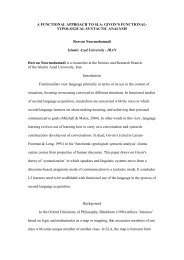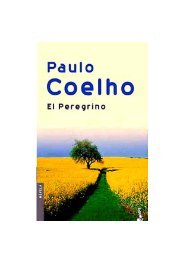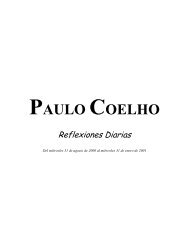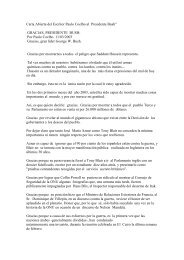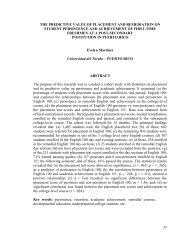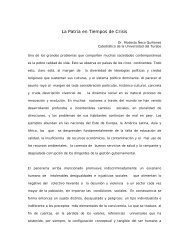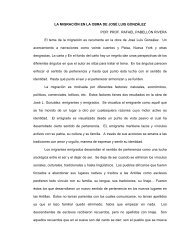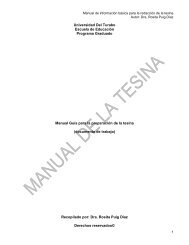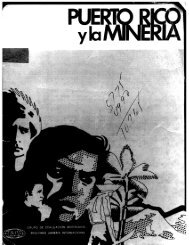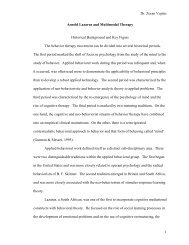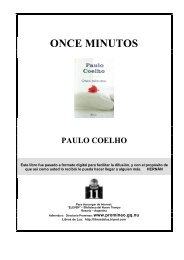Jennet Rodriguez Betancourt
Jennet Rodriguez Betancourt
Jennet Rodriguez Betancourt
You also want an ePaper? Increase the reach of your titles
YUMPU automatically turns print PDFs into web optimized ePapers that Google loves.
Rico to develop any type of autonomy, the inhabitants had to be literate because “The<br />
seizing of the means of communication and the liberation of postcolonial writing by the<br />
appropriation of the written word become crucial features of the process of self-assertion<br />
and of the ability to reconstruct the world as an unfolding historical process” (Ashcroft<br />
81). Thus literacy not only produces transformation, but also authority it, “… leads to the<br />
development of historic consciousness. It allows scrutiny of a fixed past. It enables<br />
distinctions to be made between truth and error and so permits the development of a more<br />
conscious, critical, and comparative attitude to the accepted world picture” (Ashcroft 80).<br />
The arrival of the printing press in 1806 dramatically changed Puerto Rico<br />
because more writers began to flourish and institutions like the Royal Academy of Belles<br />
Letters were founded which enormously contributed to the academic and literary<br />
development of the island. In addition, La Gaceta, the first published newspaper began<br />
to circulate. The Spanish government continued to exercise absolute censorship over<br />
newspapers, journals, and creative writing, thus generating a firm literal silencing and<br />
control. However, the literature written by elite Creole or Criollo writers born or residing<br />
in Puerto Rico during the 19 th century slowly began to elaborate the concept of<br />
difference, of “Otherness”.<br />
Writers like young eighteen year old Celedonio Luis Nebót de Padilla who in<br />
1833 published the first literary piece, a drama called Mucén o el triunfo del patriotismo<br />
began signing his work as “joven puertorriqueño” and not “joven español”. Maria<br />
Bibiana Benitez, poet and dramatist, published La Ninfa de Puerto Rico in La Gaceta<br />
(1833). In 1834, Jose Simón Romero Navarro wrote Arrogante Gulleron, Reina de<br />
Nangán, and nine young Puerto Rican writers residing in Barcelona collaborated in<br />
3




